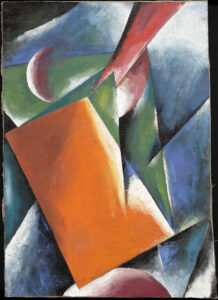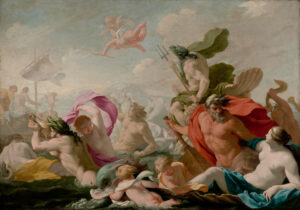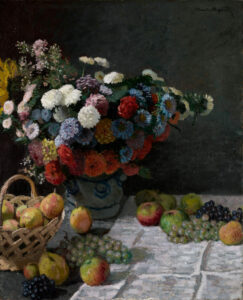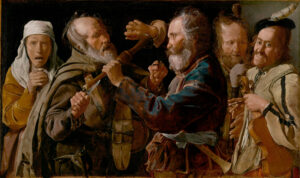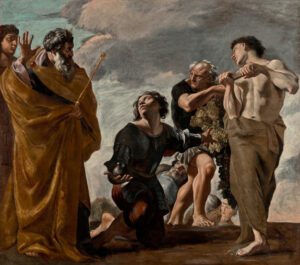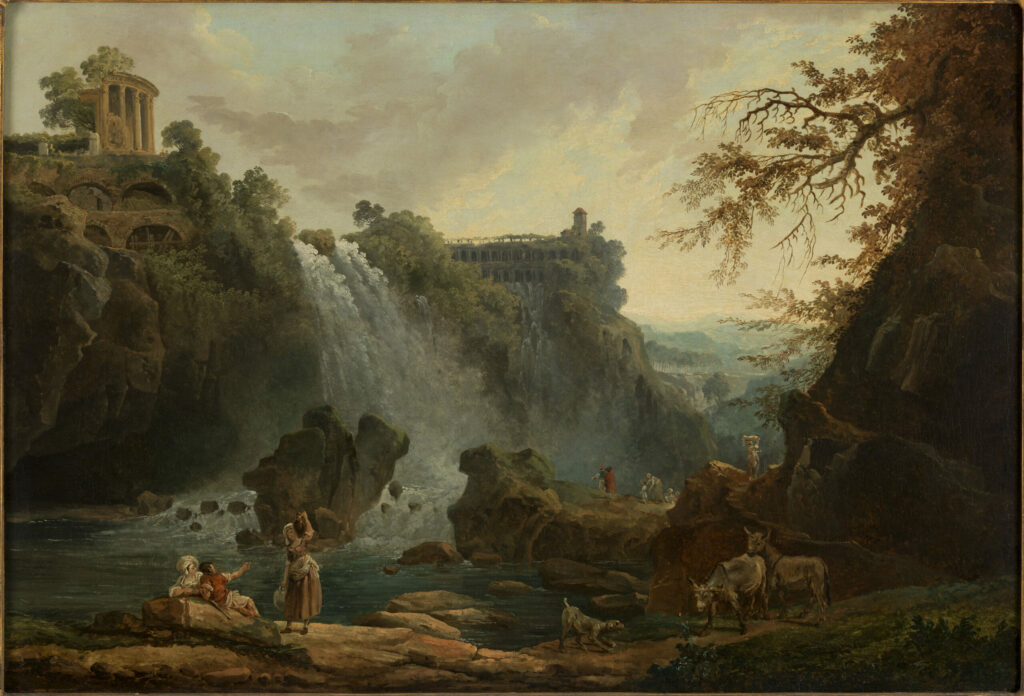
This remarkable work by Hubert Robert painted in 1776 depicts the famous cascades of Tivoli, a site that fascinated numerous Grand Tour artists.
The masterful composition balances the power of natural elements, ancient architecture, and human presence in the foreground.
The artist demonstrates an exceptional mastery of the composed landscape, a genre particularly prized during this period. The structure of the work is skillfully orchestrated: rocky masses frame the scene like a natural theater, while ancient temples—including the recognizable circular Temple of the Sibyl—crown the heights, testifying to the past grandeur of Roman civilization.
The atmospheric treatment is particularly noteworthy, with a golden-toned sky contrasting against the dark masses of rocks and the foaming whiteness of the waterfalls. This mastery of chiaroscuro lends the whole a sublime dimension, characteristic of 18th-century aesthetics. The figures in the foreground allow viewers to appreciate the monumentality of the site.
This work perfectly illustrates the fascination that ancient ruins and Italian landscapes exerted on artists and collectors of the Enlightenment, while demonstrating the evolution of landscape painting toward a pre-Romantic sensibility.
Further information
- The Cascatelles of Tivoli, by Hubert Robert, 1776
- 50 x 74 cm
- Collections of the Petit Palais, Museum of Fine Arts of the City of Paris (exhibited in Ground Floor Garden Room 12), Paris Musées
- https://www.parismuseescollections.paris.fr/fr/petit-palais/oeuvres/les-cascatelles-de-tivoli-0
Hubert Robert (1733-1808), nicknamed “Robert of the Ruins,” occupies a singular place in Enlightenment art history. His formative period in Rome (1754-1765) was decisive: he studied under Piranesi and Pannini, masters of veduta and architectural capricci. This Italian influence can be found throughout his work, particularly in this painting of the cascatelles of Tivoli.

